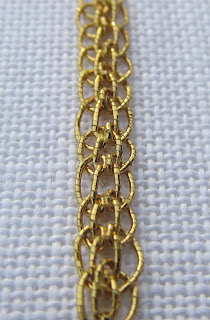“I made my song a coat
Covered with embroideries
Out of old mythologies...”
Yeats
 Although I've completed another section of embroidery on the
Although I've completed another section of embroidery on the shawl, most of the motifs
are repeats of those I've already shared with you, so I haven't included photos of them.
I did decide to add stamens to the rose, which you can see peaking out from under a petal here..

I'm more pleased with my second attempt at Long & Short stitch. Someday I may invest in Trish Burr's dvd's. I'm sure I could pick up some tips from her gorgeous work. This shawl will help me to determine if L/S stitch will become a standard of my embroidery "vocabulary".
I think L/S is a beautiful stitch, but not as fun to do as the other Elizabethan/Jacobean stitches. I enjoy the variety of the other stitches - choosing which stitch will more closely represent the texture you need for a motif, or using raised stitches to give something more "pop". The joys of embroidery....


























